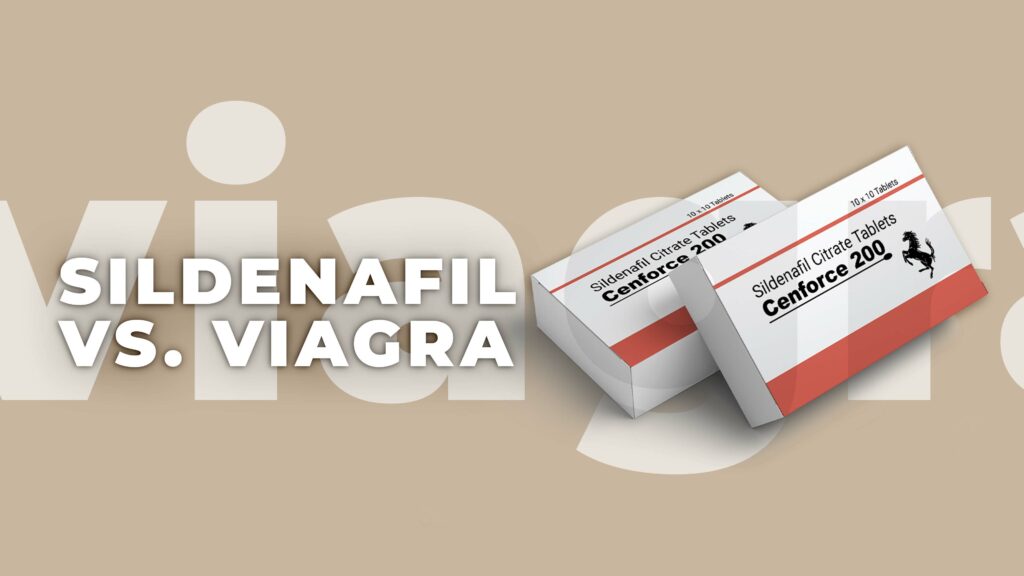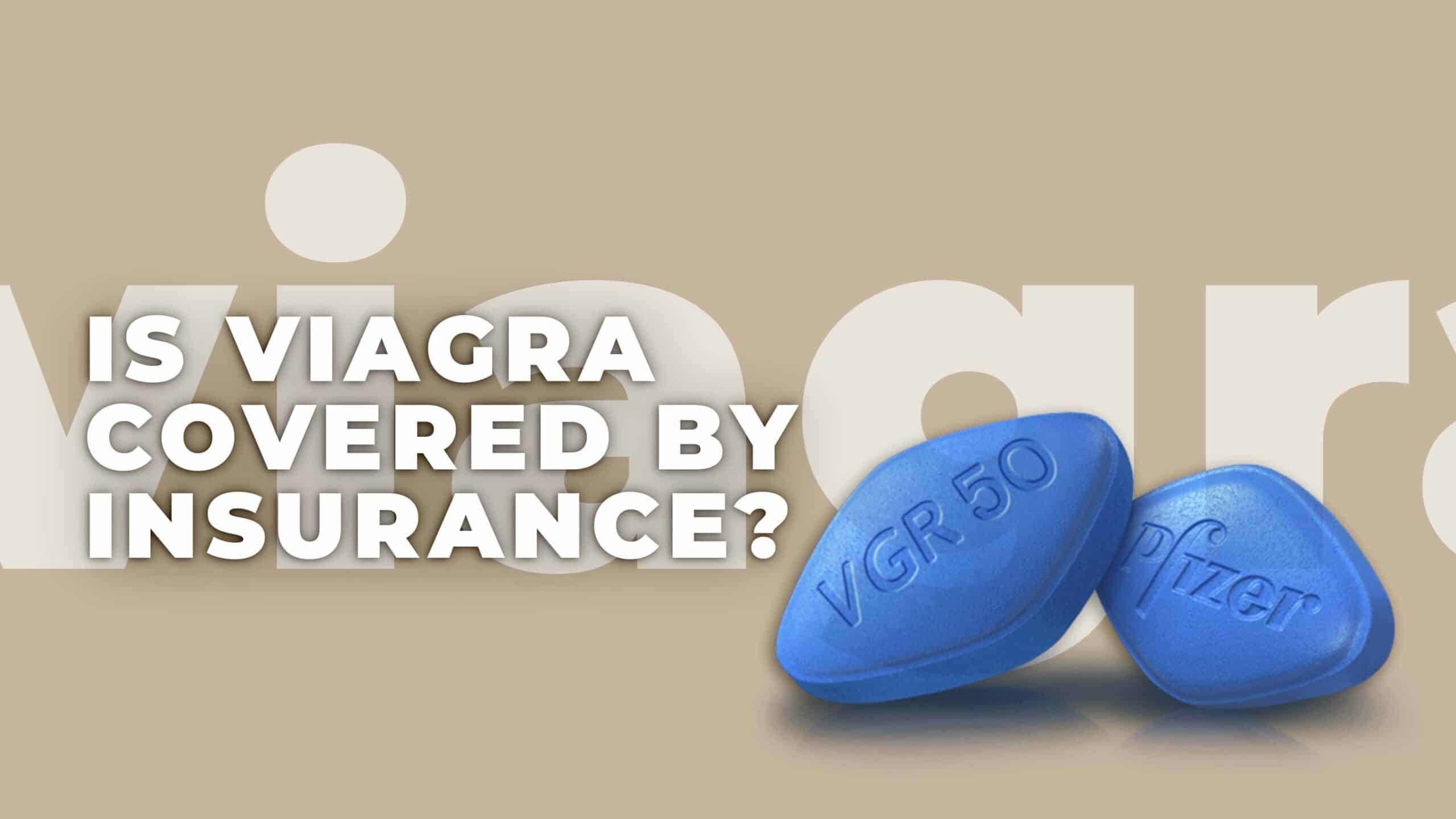You might be shocked at how much Viagra can cost you to treat your Erectile Dysfunction (ED). But a thing like Viagra Insurance is not always true. You might assume that your insurance would cover Viagra and other erectile dysfunction medications because ED is a severe medical condition that can have far-reaching consequences on your health. But we still ask ourselves, “Is Viagra Covered By Insurance?” Let us learn more about this in detail.
Does Insurance Plans Cover Viagra?
Every health insurance plan covers different things, like any treatment or medication. Numerous insurance companies offer a list of drugs that they will cover under their different plans.
Blue Cross Blue Shield’s large group plans seem to cover Viagra and other phosphodiesterase-5 inhibitors (the drug class Viagra falls under). These medications are also covered by Cigna (Cigna 2021).
It doesn’t matter what type of insurance you have. It is essential to contact your provider to confirm which medications are covered and under what circumstances. There may be specific requirements to obtain prior authorization. This means that someone from the insurance company will need access to your prescription from your doctor before authorizing coverage. They might restrict how much you can get at one time and limit the number of available refills. Also, you will need to inquire about copayments.
Viagra isn’t the only treatment for erectile dysfunction. If your insurance does not cover Viagra, ask about coverage for the following medications when you call your provider.
- Does Insurance cover Sildenafil? Sildenafil citrate is the active ingredient of Viagra.
- Does Insurance cover Cialis (or its generic equivalent, tadalafil)?
- And also, ask about Levitra (vardenafil) and Stendra.
Learn if these erectile dysfunction drugs are covered by insurance. You may have different coverage options depending on the dosage or use. Cialis can be purchased in two forms: daily (2.5 mg, 5mg, 10mg, 20mg, or 20mg) or as-needed (2.5mg, 5mg, 10mg, or 20mg) (Brock and 2016). Your insurance may cover one but not the other. Talk to your healthcare provider if your insurance company covers some medications but not others.
You may need to pay a copay if your insurance covers these medications. Or coverage may only be effective once you have met your deductible. Each plan is unique.
Sildenafil vs. Viagra

If not Viagra, is Sildenafil Covered by Insurance? If your doctor gives you a prescription, and you bring it to the pharmacy with you, most likely, the pharmacy will fill it with the generic version of the drug.
Generic medications have the same active ingredient but are much cheaper than brand-name medications. This is because the manufacturer does not spend many years researching and developing the drug.
The U.S. Food and Drug Administration (FDA) estimates that generic drugs can cost as much as 85% less than brand-name medications.
Many insurance companies will not cover the brand-name drug if a generic version is available. If you cannot afford the brand-name medication for medical reasons or if the generic has caused severe side effects, some plans may not cover it.
Pfizer is the manufacturer of Viagra, a brand-name medication. Sildenafil, or generic Viagra, is the active ingredient of Viagra. It also refers to the generic version. You can expect the same results from Viagra 25mg to 100mg because they both contain the same active ingredient.
Other Ways to Purchase Viagra

Viagra can only be purchased by prescription. Talk to your primary physician to obtain a prescription. Although it is embarrassing to discuss issues involving sexual function, your healthcare provider can help you determine the best form of treatment.
Your healthcare provider will review all of your medical records and conduct a physical exam to determine if Viagra may be able to help.
You can buy Viagra from any pharmacy with a prescription from your doctor. Keep in mind that you will most likely receive the generic sildenafil.
You may be able to buy Viagra and sildenafil online if you don’t have a primary healthcare provider. This route is not recommended as Viagra is a popular counterfeit drug. If you are looking to purchase Viagra online and think if online Viagra is covered by insurance, do your research and find an authorized online pharmacy.
How Much Does Viagra Cost Without a Prescription?
The out-of-pocket costs for Viagra can be very high if your insurance does not cover it. For 30 pills of 100mg, it can cost as much as $2,000. Each pharmacy has its prices, so it is worth looking around.
The dosage of Cialis will affect the cash price. Cialis costs about $350 for 30 pills at 2.5 mg. The highest dose (20 mg) can go for over $2,000.
However, don’t be discouraged by the high prices. Levitra retails at around $1,700 for all 30 doses. Stendra, a lesser-used medication for ED, is priced at approximately $1,600. There are cheaper options available, as well.
Cheaper Alternatives to Viagra, Cialis, and Levitra
There is currently no generic Stendra, as it is still under patent. However, there are cheaper versions available of the three other PDE5 inhibitors.
Cheaper Alternatives to Viagra
Two versions of sildenafil Citrate (the active ingredient in Viagra) are available at a lower price: generic Viagra and generic Revatio. Generic Viagra can be used in place of Viagra, and it comes in exact dosages.
Revatio is a medication used to treat a specific type of high blood pressure within the lungs (Croom, 2008). Although it may sound confusing, Revatio contains the same active ingredient that Viagra. It comes in different strengths. Revatio is available in 20 mg tablets. Viagra comes in 50 mg, 25 mg, 100 mg, and 100 mg tablets.
Some healthcare professionals prescribe generic Revatio in doses of 20, 40, 60, 80, and 100 mg to treat ED. This is off-label prescribing since Revatio, and its generic form, has not been FDA-approved for ED.
Generic Revatio, a cheaper alternative to Viagra, is available at a price as low as $10 for 30 100mg doses (depending on the pharmacy).
Cheaper Alternative to Cialis
Cialis’ active ingredient is tadalafil. It is a longer-acting medication than sildenafil citrate but is about as effective (Gong 2017). You can buy tadalafil at the cost of $20 for 30 doses (with some variation between doses). It all depends on the pharmacy you use.
Cheaper Alternative to Levitra
Levitra is the brand name of vardenafil. Vardenafil is another PDE5 inhibitor and treats ED in a very similar manner to sildenafil citrate or tadalafil (Morales 2009). Vardenafil, although a lot cheaper than the Levitra brand, is still quite expensive. It costs close to $250 for 30.
Are Medicare and Medicaid Covered for Viagra?
You need to check your Medicare or Medicaid benefits to find out about prescription drug coverage. There is a greater chance that one of the generic versions, such as sildenafil citrate or vardenafil, will be covered by your Medicare or Medicaid plan than its brand-name counterparts. Prescription drug coverage is covered by Medicare Part D.
How do PDE5 Inhibitors Treat Erectile Dysfunction?
PDE5 inhibitors are medications that are used to treat male sexual dysfunction. Examples include Viagra, Cialis, and Levitra. PDE5 inhibitors prevent the enzyme PDE5 from acting. When this enzyme is not blocked, it breaks down cyclic Guanosine Monophosphate (cGMP), a chemical that causes blood vessels to relax in the penis.
PDE5 inhibitors can block PDE5 and cause a decrease in cGMP levels, which results in better blood flow to the penis. A stronger erection is possible when more blood flows to the penis (Huang 2013).
Final Thoughts

These medications all work in the same way, but there are some differences in their effectiveness and side effects. The choice of medication will ultimately depend on the advice of your healthcare provider and what is most affordable for you.
To find out if your insurance covers these medications, call your provider. You can shop for the best deals at different licensed pharmacies if they aren’t covered.
References
- Blue Cross Blue Shield. “Blue Cross Clinical Drug List – January 2021.” Retrieved from https://www.bcbsm.com/content/dam/public/Consumer/Documents/help/documents-forms/pharmacy/clinical-drug-list-formulary.pdf on January 20, 2021.
- Brock, G., Ni, X., Oelke, M., et al (2016). Efficacy of Continuous Dosing of Tadalafil Once Daily vs Tadalafil On Demand in Clinical Subgroups of Men With Erectile Dysfunction: A Descriptive Comparison Using the Integrated Tadalafil Databases. The Journal of Sexual Medicine, 13(5), 860–875. Doi: 10.1016/j.jsxm.2016.02.171. Retrieved from https://pubmed.ncbi.nlm.nih.gov/27114197/
- Cigna. “Cigna Performance 3-Tier Prescription Drug List – starting January 1, 2021.” Retrieved from https://www.cigna.com/static/www-cigna-com/docs/individuals-families/member-resources/prescription/performance-3-tier.pdf on January 20, 2021.
- Croom, K. F., & Curran, M. P. (2008). Sildenafil: a review of its use in pulmonary arterial hypertension. Drugs, 68(3), 383–397. Doi: 10.2165/00003495-200868030-00009. Retrieved from https://pubmed.ncbi.nlm.nih.gov/18257613/.
- Gong, B., Ma, M., Xie, W., Yang, X., Huang, Y., Sun, T., Luo, Y., & Huang, J. (2017). Direct comparison of tadalafil with sildenafil for the treatment of erectile dysfunction: a systematic review and meta-analysis. International Urology and Nephrology, 49(10), 1731–1740. Doi: 10.1007/s11255-017-1644-5. Retrieved from https://www.ncbi.nlm.nih.gov/pmc/articles/PMC5603624/
- Huang, S. A., & Lie, J. D. (2013). Phosphodiesterase-5 (PDE5) Inhibitors In the Management of Erectile Dysfunction. P & T: A Peer-Reviewed Journal for Formulary Management, 38(7), 407–419. Retrieved from https://www.ncbi.nlm.nih.gov/pmc/articles/PMC3776492/.
- Morales, A. M., Mirone, V., Dean, J., & Costa, P. (2009). Vardenafil for the treatment of erectile dysfunction: an overview of the clinical evidence. Clinical Interventions in Aging, 4, 463–472. Doi: 10.2147/cia.s3878. Retrieved from https://www.ncbi.nlm.nih.gov/pmc/articles/PMC2801586/.










Leave a reply